Written by: Stoo
Date posted: April 16, 2003
Note – this is something I wrote many years ago, back in our early days. It stops at 2002, but to be honest the genre went quiet soon after that anyway. In fact it now appears almost dead, apart from fan mod and a few promising kickstarter projects such as Star Citizen. I hope some kind of revival is possible, even if only on the indie scene, as I spent many happy hours on classics like TIE Fighter.
Anyway I may rewrite this one day, but for now, hope you find it interesting.
1984
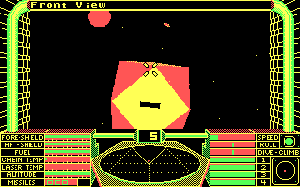 A major milestone appears in the world of gaming, with the arrival of Elite. It’s a completely open-ended space-trading game where you’re free to go and make profit wherever you wish. Whether you prefer lawful trading or rampant blasting, Elite contains entire galaxies to fly around in, all in true 3D. It appears on a number of formats, but as the PC gradually stamps out all other non-console home computer opposition, it becomes home of the space-sim genre.
A major milestone appears in the world of gaming, with the arrival of Elite. It’s a completely open-ended space-trading game where you’re free to go and make profit wherever you wish. Whether you prefer lawful trading or rampant blasting, Elite contains entire galaxies to fly around in, all in true 3D. It appears on a number of formats, but as the PC gradually stamps out all other non-console home computer opposition, it becomes home of the space-sim genre.
1990
Leap forward a few years, and 386 owners go slack-jawed in amazement at the awesome graphics of the first in the Wing Commander saga. It uses a hybrid bitmap\3D engine which allows decent speed on the the hardware of the day. WC also features a complex mission structure, that can take you along several different paths according to your successes and failures.
1991
Wing Commander 2 looks even better than its predecessor. It is perhaps a bit more linear, but does feature a compelling storyline to keep gamers hooked, making for a cinematic gamign experience. I’m reliably informed by Rik that watching through all the cutscenes is a lot more fun than the ill-advised Wing Commander movie (released several years later).
1992
 One of the most important PC games this year is Lucasarts’ X-Wing. There had been Star-Wars shoot-’em’ups before, but this is the first to provide a full simulation of a Rebel Alliance starfighter. Now you can hunt down TIE fighters and strafe Star Destroyers from the comfort of your own home. Apart from the strength of the license, X-Wing has some great gameplay (albeit bloody difficult in places). The Wing Commander series now has a serious rival, with X-Wing pitting true 3D spacecraft against WC’s sprites.
One of the most important PC games this year is Lucasarts’ X-Wing. There had been Star-Wars shoot-’em’ups before, but this is the first to provide a full simulation of a Rebel Alliance starfighter. Now you can hunt down TIE fighters and strafe Star Destroyers from the comfort of your own home. Apart from the strength of the license, X-Wing has some great gameplay (albeit bloody difficult in places). The Wing Commander series now has a serious rival, with X-Wing pitting true 3D spacecraft against WC’s sprites.
1993
Frontier (left), the sequel to Elite finally arrives. Its primary strength is the sheer freedom granted to the player, letting you take up mining, piracy, trading, military work and more. It also has a relatively realistic flight model and boasts an impressive depiction of a ‘real’ galaxy, with the game engine generating entire full-sized solar systems, complete with planets you can actually land on. The combat does suck though.
Also, a couple of Wing Commander spin-offs arrive. The weaker of the two is Academy, which is essentially all the dogfighting from WC2 (and a mission builder), but without any kind of story. Much more significant is the release of Privateer (right), which mixes some Elite-style trading into the WC formula.
1994
X-Wing spawns a sequel in the form of TIE Fighter (left), a famed classic of PC gaming. Now the huge Star Destroyers, swarms of cannon-fodder fighters and people in ominous-looking uniforms are on your side. Even better, you can shout things like “you rebel scum” at your screen as you blast Y-Wings into tiny pieces. TIE Fighter improves all-round on X-Wing with Gourad shading, op-notch dogfighting fun, and a more forgiving difficulty curve.
However, Wing Commander is busy striking back with a third spin-off, Armada. Instead of a narrative, it offers a basic strategy framework where you capture planets and use them to build fighters for your fleet. Not the greatest in the series, but it does feature a shiny new 3D engine with textured polygons, an improved version of which will be seen in number three in the ‘main’ series.
WC3 (right) is a truly spectacular affair when it arrives, making Pentium owners feel very smug indeed. The storyline is driven by some impressive full-motion-video sequences, starring some of the biggest actors ever seen in a computer game, including Malcom McDowell, Mark Hamill and John Rhys-Davies. To go with the theme of being in your own scifi movie, you can also choose the actions of the hero in some video scenes. Together with the new engine, the game looks astounding. Some gameplay purists do however grumble about repetitive missions and prefer TIE.
Also, Microsoft unveils their Space Simulator. This isn’t really a ‘game’, but rather an incredibly realistic model of spaceflight. No zapping starfighters, or lugging cargo around; this is all about escape velocities, elliptical orbits and specific impulses.
1995
The Wing Commander juggernaut rolls onwards, with this fourth outing being possibly the best of the lot (left). The “war against an alien empire” thme finally moves aside for a new story about dissent, rebellion and treachery. Apparently costing $10 million to make, Wing4 is an unashamedly overblown and flashy affair. The gameplay in the missions is again a bit clunky, but they do serve as entertaining action sequences between highly impressive video clips.
For the space-traders there is also Frontier: First Encounters (right), which is more an enhanced version of Elite 2 than an entirely new game. The graphics, especially planetary surfaces, are spruced up and an optional storyline is thrown in though a series of scripted missions. Unfortunately, the game gets off to a a very shaky start, being plagued with bugs.
1996
The game of note this year is Privateer 2: The Darkening (left). Despite carrying on the name of a Wing Commander sping-off, it actually has nothing to do with any of the WC series. Nonetheless, P2 is regarded as a classic by many. It features freeform Frontier-style trading elements, mixed in with decent combat and an intriguing story about a man trying to trace his lost identity across a colourful and quirky set of worlds. It’s helped along by some great video sequences starring (amongst others) Christopher Walken.
This is also the year that the infamous Battlecruiser 3000AD (right) emerges. It’s an ambitious attempt to out-elite Elite, offering a dynamic universe to explore, trade and fight in. You are given command of a massive warship with full control over internal systems and crew. Sadly, BC3K is bugged to the point of virtual unplayability. Notorious creator of the game Derek Smart claims it was rushed to the shelves by publishers before it was ready. After much legal wrangling he regains the rights to the game, tries to clean it up a bit, and offers it as a free download.
1997
For the more hardcore simulation fans, this year brings I-War (left). Rather than the “world-war 2 in outer space” style of most space-shooters, I-War goes for a more realistic flight model, using the effects of thrust and inertia. It also breaks the usual trends by giving you command of a large starship, instead of a fighter. The learning curve is steep, but there’s a great story and a wealth of diverse missions on offer for those who get the hang of it. (I just cheated a lot.)
The X-Wing meanwhile hits a lower note with X-Wing vs TIE Fighter. It looks good enough for the day with texture mapping, but concentrates almost exclusively on multiplayer and random dogfighting, with no storyline or single-player game to speak of.
Meanwhile, the Wing Commander series comes to (nearly) the end of its run. WC: Prophecy (right) aims to throw off the overblown “interactive-movie” mantle and concentrate on gameplay. Opinions are mixed as to how well this plan works.
Another space-shooter that quietly slips out is Darklight Conflict. This is one of the last commercial games written to run under MS-DOS, and looks quite impressive despite not using the rapidly ascending force in PC gaming that is 3D-acceleration.
You might think it odd the genre has made it this far without a serious Trekkie entry. Well, one finally arrives in the form of Starfleet Academy. Its strengths include varied missions and an authentic Trek feeling to the proceedings helped by video clips starring Bill Shatner and Walter Koenig. The biggest criticism is that your ship handles more like an X-Wing than the Enterprise.
1998
The fighter-combat side of the genre, so long dominated by the two big names, receives a new champion in the form of Conflict: Freespace (pic). This features the same kind of excellent fluid, flowing gameplay as TIE Fighter, with the emphasis on action instead of realism. The combat and dogfighting are polished to a very high standard with extra huge and scary capital ships thrown used to good effect.
The Wing Commander series meanwhile has a last offering, with Secret Ops. It’s essentially just a string of missions with in-engine cutscenes but no video clips, but it is completely free. Quite a nice gift to veteran fans of the series.
Finally, one unlikely contender this year is the fourth X-Com game. Interceptor throws out the isometric-view infantry combat tradtional to the series for a bit of starfighter-piloting. It abandons what X-com was known to be good at, and doesn’t seem to make much impression on this genre either.
1999
X-Wing Alliance (left) brings the Lucasarts series back on form. There’s a decent single-player campaign, with all the rebel-starfighter excitement we might hope for, plus a new angle of flying for a family of smugglers. The opportunity to finally get behind the controls of the Millenium Falcon is a highlight for all true Star Wars fans.
The success of Freespace meanwhile prompts the quick release of a sequel (right). It’s very similar overall, but featuring even more massive and ridiculously well-armed cruisers and destroyers for you tackle. Capital ships are more active and deadly than ever seen in the genre, raking at fighters (and each other) with beam cannon and flak-guns. With little having come since to challenge its throne, the Freespace series is still seen as perhaps the benchmark for pure fighter action, with a host of fan made mods and graphical improvements.
2000
Chris “Wing Commander” Roberts returns with Starlancer (left). It doesn’t do a lot new, but instead it sticks to familiar fighter-combat territory and makes a pretty decent job of it, bar the odd bit of frustrating torpedo-chasing.
Meanwhile, X: Beyond the Frontier (right) isn’t an official relation to the Elite sequels, but is obviously inspired by that series. It represents a major development of the space-trading formula, by adding a new key feature – as well as trucking goods around, you can set up factories to make your own produce. It’s a vast and complex game, that lets you in time build up an entire industrial empire.
Also out this year is Tachyon: Beyond the Fringe. This is largely mission based, but with some limited freeform aspects, giving you the choice to work for one of two main factions. For added entertainment value, the voice of your character is provided by none other than Bruce Campbell. Tachyon receives fairly decent reviews, although some do criticise it for sluggish combat.
Trekkies and simulation fans meanwhile are enjoying Klingon Academy. It’s more successful than its predecessor in capturing the feeling of piloting a big starship, but there are also complaints of fiddly controls and irritating mission structure.
2001
Fans of I-War rejoice as a sequel arrives (pic), taking all the best features of the original and expanding on them. It’s story-driven but less linear than the original with resource-management and free-form aspects too. It incorporates the realistic physics model of its predecessor, but is somewhat more accessible overall.
Derek Smart meanwhile has another go, with Battlecruiser Millenium. Like its predecessor it’s incredibly wide in scope, but also hideously complex. Only a small hardcore of gamers manage to figure out how the hell it works, but these elite few proclaim BCM to be a work of genius.
2002
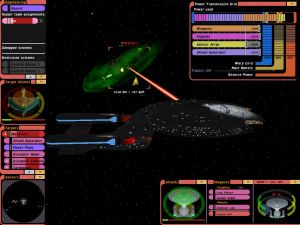 The team behind X-Wing Alliance now turns their talents to the Star Trek license, bringing us the well-received Bridge Commander. This takes a slightly different approach to controlling your vessel; you can fiddle with all the controls yourself if you wish, or you can sit in the Captain’s chair, and hand out orders to your bridge crew.
The team behind X-Wing Alliance now turns their talents to the Star Trek license, bringing us the well-received Bridge Commander. This takes a slightly different approach to controlling your vessel; you can fiddle with all the controls yourself if you wish, or you can sit in the Captain’s chair, and hand out orders to your bridge crew.

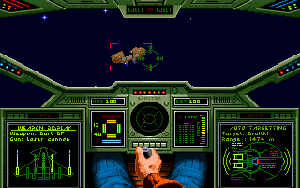
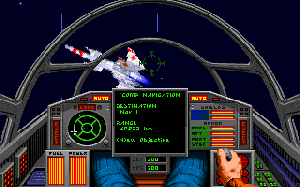

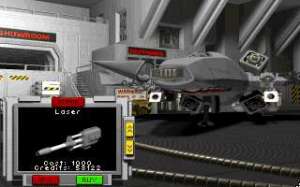
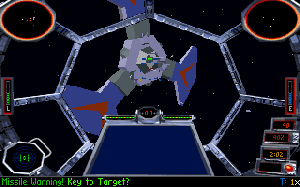
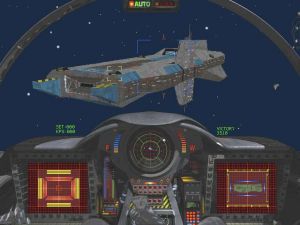
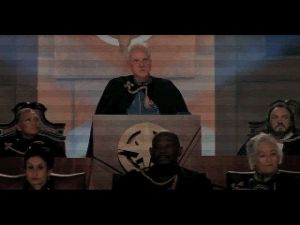

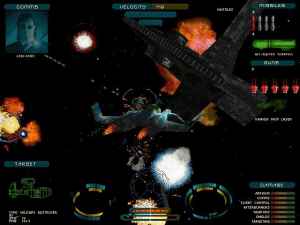
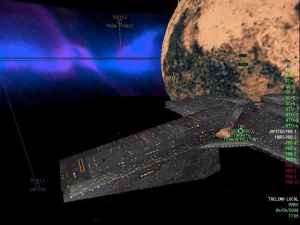
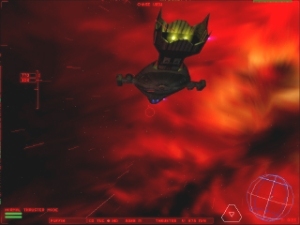
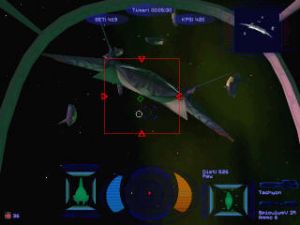
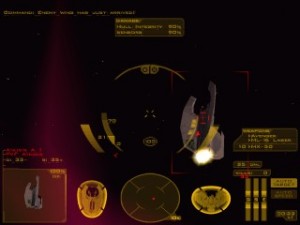

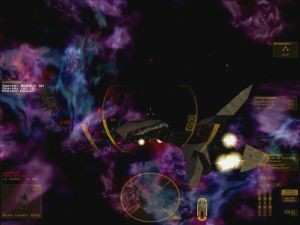
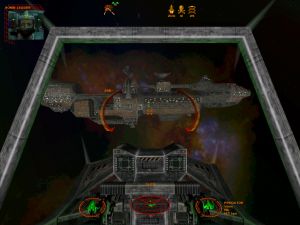
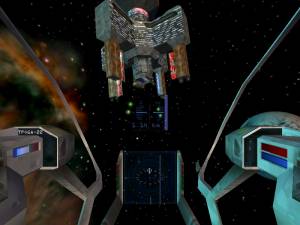

 Posts
Posts